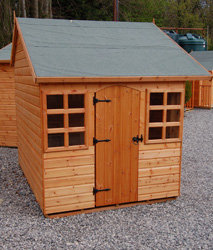Longer lifetime for greener outdoor wood products
Wood products for outdoor use are treated with coatings to protect against moisture and sunlight. European Commission legislation now calls for the replacement of solvents in coatings with water to eliminate the release of hazardous emissions from volatile organic compounds (VOCs) into the atmosphere. However, wood treated with water-borne coatings is more susceptible to fungi and weathering and it also tends to discolour easily. EU-funded scientists working on the DURAWOOD project enhanced the adhesion to wood of water-borne coatings, waterproofing performance and biocidal activity through the innovative application of plasma discharge technology. Plasma treatment is already widely used in industry to activate the surfaces of plastics, textiles, glass and metals as a pre-treatment for coatings and other processes. However, standard atmospheric pressure discharge systems that are favourable to low-pressure ones requiring a vacuum are not easily applied to thick pieces of wood. They rely on placing the material between two electrodes and modifying the surface through high-frequency electrical discharges. Due to the very high resistance of wood, the extreme voltages needed consume a significant amount of energy and raise safety concerns. DURAWOOD researchers employed planar electrodes in which the electrical current and ionised gas are confined to a thin layer above the electrode for high-volume power density to generate a high concentration of reactive species. By adjusting the conditions of the diffuse coplanar surface barrier discharge (DCSBD) treatment, the DURAWOOD system can either increase the wettability (hydrophilicity) of wood to enhance water borne coating adhesion or increase the initial water repellence (hydrophobicity) to block moisture absorption. The treatment even has significant inherent biocide activity on fungi already present in the wood, considered a potential initial decontamination effect. Project outcomes enable cost-effective and improved application of environmentally friendly water-borne coatings to outdoor wood products for enhanced durability. Market uptake of the DURAWOOD technology will be encouraged by European Commission legislation to minimise the use of VOCs emitted by solvent based coatings and carbon dioxide emissions associated with the conventional pre-treatment processes. Both producers and consumers will have important benefits.







